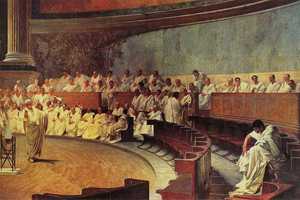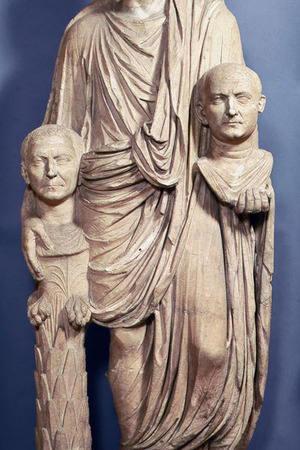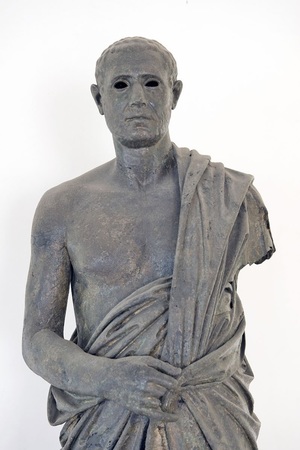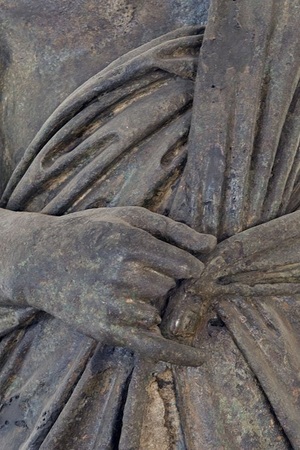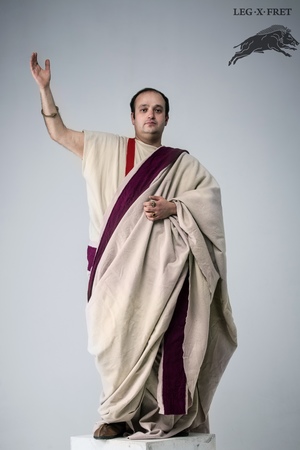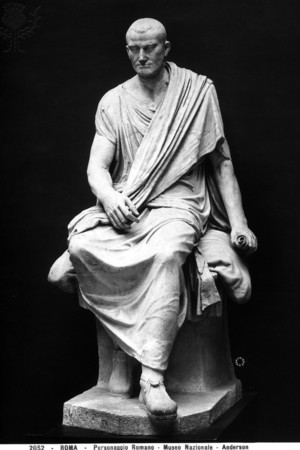Senator
A senator (Latin: senator) was a citizen of Ancient Rome who was a member of the Senate. The Senate (Latin: senatus, from senex - old man, council of elders) was one of the highest governing bodies in Ancient Rome. It was created from the council of elders of patrician families at the beginning of the monarchical period by the first king of Rome, Romulus. Originally, the Senate consisted of 100 members.
With the establishment of the Republic, the Senate became a significant element of public life alongside the magistrates and popular assemblies (comitia). The Senate was composed of former magistrates who held their positions for life, thus concentrating the political power and state experience of Rome.
History
Senators were expected to exhibit proper behavior, have a good education, responsibility, and possess a certain level of wealth. Members of the Senate were ranked according to their previously held offices, and these ranks determined the order in which they were allowed to speak. The Senate was led by the most respected elder, known as the princeps (princeps senatus).
During the Republic (5th-3rd centuries BC), as a result of the class struggle between plebeians and patricians, the Senate’s power was limited in favor of the popular assemblies (comitia).
In the 3rd-1st centuries BC, the Senate reviewed proposed laws before they were voted on in the comitia. It held primary authority over military matters, foreign policy, finances, state property, and also supervised religious cults, had the right to declare a state of emergency, and more. The Senate ratified laws and election results and controlled the activities of magistrates. In this way, the Senate effectively governed the state.
The decrees of this governing body had the force of law (senatus consulta). Popular and plebeian assemblies (plebiscite) also had similar powers.
During the Imperial period, the Senate's power became increasingly limited, shifting to the emperor. Formally, the Senate was still considered the highest state body, but in reality, it became an assembly of aristocrats without real political influence. Although Senate decrees held the force of law, they were rarely implemented without the emperor's initiative. Starting with Octavian Augustus, Roman emperors held the title of the head of the Senate—"princeps."
In the late 3rd century AD, under Diocletian, the Senate was reformed into the city council of Rome. In the 4th century, under Constantine, it was established in Constantinople and had the same rights and responsibilities as the Senate of Rome.
Number of Senators in Different Periods::
- Initial number of senators — 100
- Early Republic (until 88 BC) — 300
- Under Sulla — 600
- Under Caesar — 900
- Early Empire (beginning with Augustus) — 600
- Dominate period — 2000.
Reconstruction
A senator could wear, in addition to regular footwear, special red calcae, which could be worn over socks. Like any Roman citizen, a senator could wear a belted tunic with two red stripes (clavi) and a toga. The toga could also be worn without a tunic, directly on the bare body. The most common adornments for this class were rings.
Related topics
Literature
- Rostovtsev M. I. Roman Senate // Brockhaus and Efron Encyclopedic Dictionary: in 86 volumes (82 vols. and 4 supplements). — St. Petersburg, 1890—1907.
- Talbert R.J.A. The Senate of Imperial Rome. — Princeton: Princeton University Press, 1984.
- Dementyeva, V. V. State and Legal Structure of Ancient Rome: Early Monarchy and Republic: Textbook/V. V. Dementyeva. — Yaroslavl State University. — Yaroslavl, 2004.
- Cooper, Kate; Julia Hillner. Religion, Dynasty, and Patronage in Early Christian Rome, 300–900. — Cambridge University Press, 2007. — ISBN 978-1-139-46838-1.

 Gallery
Gallery






